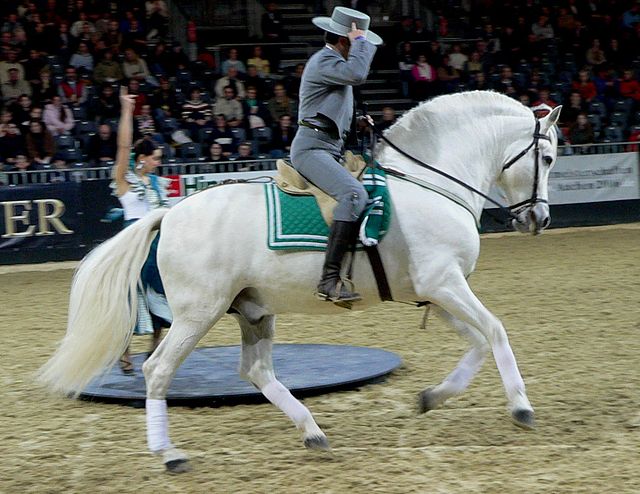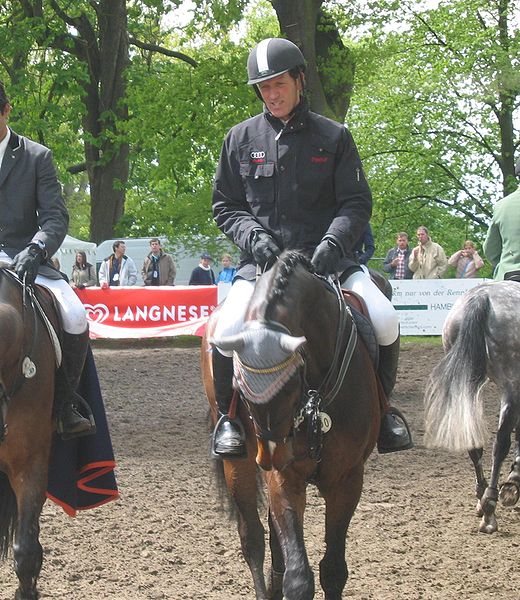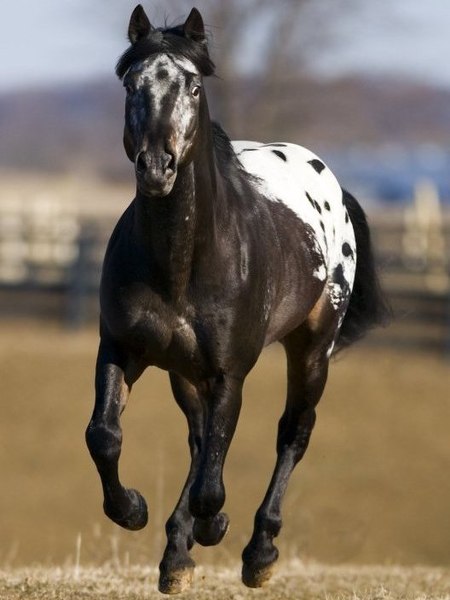Riding aids are the cues a rider gives to a horse to communicate what they want the animal to do. Riding aids are broken into the natural aids and the artificial aids.
A rider with a well-balanced, independent seat, allowing her to give precise aids.
Using the leg aid slightly behind the "neutral" position, to keep the horse correctly bent on a circle. Note the majority of the aids to turn are given with the legs, not the hands.
The rider's right direct rein bends the horse in that direction. It is supported by correct leg aids, with the inside leg at the girth and the outside leg behind.
A driving seat.
The canter and gallop are variations on the fastest gait that can be performed by a horse or other equine. The canter is a controlled three-beat gait, while the gallop is a faster, four-beat variation of the same gait. It is a natural gait possessed by all horses, faster than most horses' trot, or ambling gaits. The gallop is the fastest gait of the horse, averaging about 40 to 48 kilometres per hour. The speed of the canter varies between 16 and 27 kilometres per hour depending on the length of the horse's stride. A variation of the canter, seen in western riding, is called a lope, and is generally quite slow, no more than 13–19 kilometres per hour (8–12 mph).
A horse and rider at the canter
A miniature horse at a gallop
The diagonal pair (in this case, right hind and left fore) is no longer in sync at the gallop.
The suspension phase, all four legs momentarily off the ground








